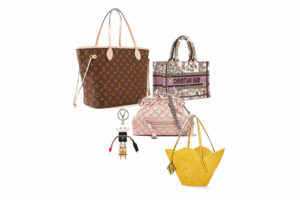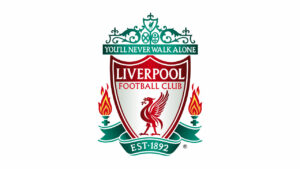Louis Vuitton totes and Dior micro bag can save luxury

By Andrea Felsted
IN 2007, Louis Vuitton introduced a new spacious bag in its trademark monogram. Meant as a seasonal beach carry-all, the Neverfull, as it was known, became an instant hit. Part of the appeal was that it was relatively affordable. I purchased one in 2010, and it cost around £600 ($760). Not cheap for a coated canvas bag, but around a quarter of the price of a classic Chanel.
That was a time when many people — either through rising wealth in China and the US, or diligent saving (like this columnist) — became able to buy into designer names that previously only catered to the very rich. Today, after several years of sharp price increases (a large Neverfull now costs £1,450) and the luxury industry flatlining, brands must once again democratize their customer bases.
The European giants have long been good at this. Take Kering SA’s Gucci for example: It wasn’t just its rejuvenation under former creative director Alessandro Michele eight years ago that turbo-charged sales. It also sold bags well under £1,000 and belts as relatively affordable ways to buy into the new Gucci. This helped it capture first the flourishing Chinese middle class and then young Americans flush with pandemic stimulus checks and crypto gains.
Now Gucci, like its peers, is trying to move upmarket. In one respect, this makes sense. The US aspirational luxury consumer, under pressure from inflation and rising interest rates, has retrenched, while Chinese buyers remain cautious. Meanwhile, sales growth at Hermes International SCA and Brunello Cucinelli SpA, which cater to the 1%, has outpaced rivals. Those more exposed to the middle class, such as Kering and Britain’s Burberry Group Plc, have struggled.
But with every brand courting the rich, luxury groups are leaving the lower echelons to the more premium fast-fashion players, led by Inditex SA’s Zara, as well as a diminishing number of companies still catering to this segment, such as jeweler Pandora A/S and Hugo Boss AG. The bling behemoths must reconnect with the cohort they have priced out — but in a way that doesn’t destroy their desirability.
The most obvious route is through categories such as eyewear, beauty, and fragrance that have long served as entry points. Even Hermes, best known for the Birkin, with a midsize bag costing around £8,000, sells beauty products, fragrance, scarves, ties, and costume jewelry.
Another way to make products more affordable is to simply shrink them. Small leather goods are already becoming a more important part of the range. Mini bags can be sold for less than larger items. Indeed, houses including LVMH’s Dior have produced slightly cheaper “micro” versions of popular models (as well as even less pricey pouches), sparking a raft of TikTok videos on just how much, or little, buyers can fit into them.
More affordable collections, known as secondary or diffusion lines, which were popular in the noughties, are a no-no. But there may be room for some limited-edition capsules. There could be some blurring of brand boundaries in other ways too.
Take Marc Jacobs, owned by LVMH. It has recovered from years of underperformance, thanks to its logo Tote bags, which start at about £200. It has also reissued some of its leather bags, including its best known, the Stam, which sells for the mid-range $1,495, as well as a few styles from its now defunct Marc by Marc Jacobs secondary line. It’s not hard to see it delving further into what it dubs the M(archives), particularly if the Tote becomes ubiquitous.
Another option is offering more unusual products, which don’t feel like trading down. A case in point is Loewe’s raffia baskets. These start at around £400, much less than its leather bags that typically cost between £2,000 and £3,000. The distinctive accessories, which have spawned a raft of high-street imitations, have only made the LVMH-owned brand designed by Jonathan Anderson more coveted. Other novelties, such as Prada’s robot keychains and even Louis Vuitton’s chocolates (on sale in France and recently Singapore), can stretch houses even further.
Companies could even start offering secondhand pieces, following Rolex SA’s lead and certifying pre-owned products for sale on their own websites.
Given that selling secondhand goods requires specialist skills and logistics, they could also partner with resale sites such as The RealReal, Inc. Kering has gone a step further already, investing in rival platform Vestiaire Collective.
Such an approach can prevent customers unable to afford new products from defecting to more affordable brands — such as Tapestry, Inc.’s Coach, which has found success with its Tabby bag. This also establishes relationships with aspiring luxury shoppers, who may be interested and able to buy new items later on.
There were rumors last year that the Neverfull was being discontinued or could only be purchased via a wait list. These proved false, and the bag remains a bestseller. That’s fortunate for me, as it’s still one of my go-tos.
The luxury giants should take note. With LVMH set to generate little sales growth from its fashion-and-leather-goods division in the first quarter, they need styles such as the Neverfull more than ever. — Bloomberg Opinion




